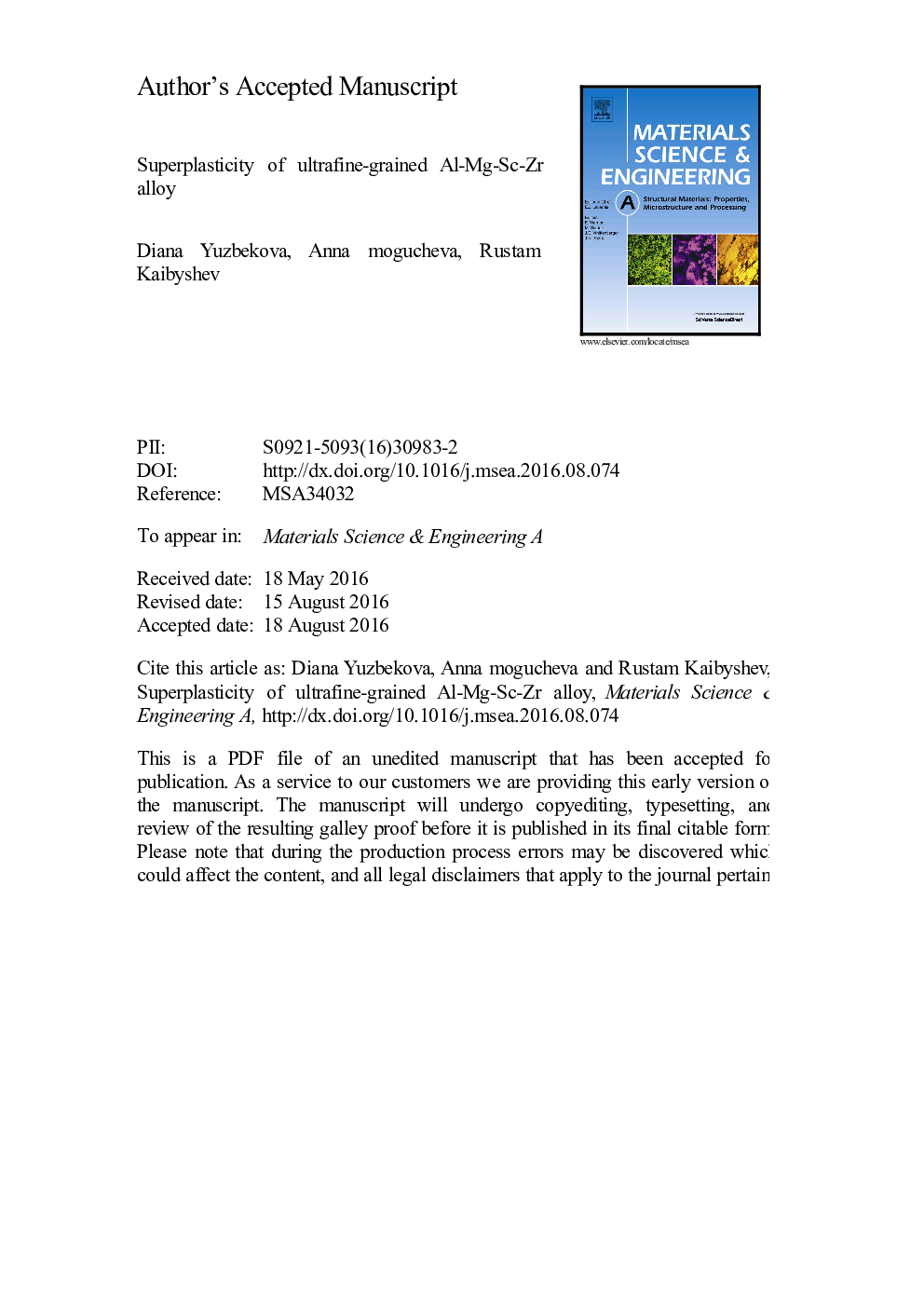| Article ID | Journal | Published Year | Pages | File Type |
|---|---|---|---|---|
| 1573032 | Materials Science and Engineering: A | 2016 | 53 Pages |
Abstract
The superplastic behavior of an Al-Mg-Sc-Zr alloy with a grain size of ~0.7 µm produced by equal channel angular pressing (ECAP) was examined in the temperature interval 150-500 °C at strain rates ranging from 10â5 to 10â1 sâ1. No significant grain coarsening occurs under static annealing up to 450 °C because of the strong pinning effect of Al3(Sc, Zr) dispersoids. The alloy showed superior ductility of 365 pct at 175 °C, 1200 pct at 275 °C and ~3300 pct at 450 °C and strain rates of 1.4Ã10â4 sâ1, 5.6Ã10â3 sâ1 and 5.6Ã10â1, with corresponding strain rate sensitivities of 0.3, 0.49 and 0.2, respectively. Analysis of the superplastic behavior in terms of threshold stress and surface observations showed that grain boundary sliding (GBS) controlled by grain boundary diffusion is the dominant deformation mechanism under all of the conditions. The strong pinning effect of coherent Al3(Sc, Zr) particles leads to a high dislocation density within grains after superplastic deformation that leads to initial strain hardening at low temperatures and high threshold stress. Analysis of the superplastic behavior showed that the strong temperature dependence of the threshold stress is most likely attributable to the interaction between dislocations and the coherent dispersoids, and the effect of temperature on the optimal strain rate of superplastic deformation associated with the highest values of elongation-to-failure is attributable to absorption of a lattice dislocation by a grain boundary rather than the climb of this dislocation along the boundary.
Keywords
Related Topics
Physical Sciences and Engineering
Materials Science
Materials Science (General)
Authors
Diana Yuzbekova, Anna Mogucheva, Rustam Kaibyshev,
